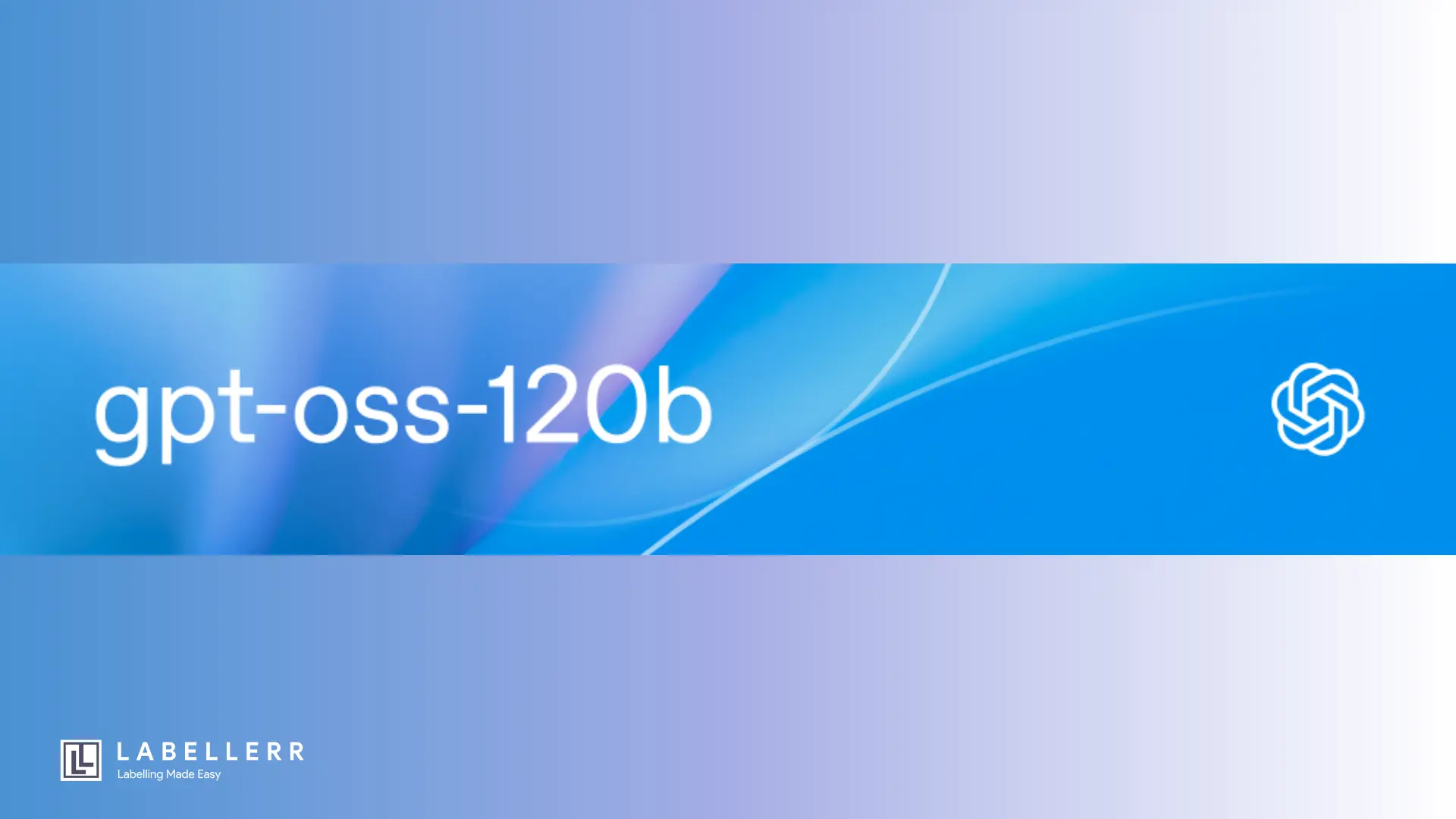GPT-OSS Review: OpenAI's Free Model
GPT-OSS is an open-source framework for working with GPT-like models. It supports training, fine-tuning, deployment, and integration while ensuring transparency, community-driven development, and flexibility for research and production.

Our expert analysis of gpt-oss, OpenAI's powerful open-weight model. We cover how its reasoning, 128k context, and MoE architecture deliver state-of-the-art performance on consumer hardware like a gaming PC.
What is gpt-oss?
OpenAI has released gpt-oss:20b and gpt-oss:120b powerful and free AI models that marks a major shift in making advanced AI accessible to everyone. Unlike previous models that required expensive cloud servers, gpt-oss is designed to run efficiently on your own computer.
This article provides a complete review of gpt-oss:20b. We explain what it is, how it performs, and how you can use it for development, research, and other real-world applications.
Our goal is to show you how this model delivers high-end performance without needing a supercomputer, making it a game-changer for AI enthusiasts and professionals.
How GPT-OSS-20B Works: A Technical Deep Dive?
The key to gpt-oss:20b's power and efficiency is its Mixture-of-Experts (MoE) architecture. This advanced design allows the model to deliver impressive results while using a fraction of the resources of a traditional AI model.
An MoE model works like a team of specialists. Instead of a single, massive AI trying to solve every problem, the model has a pool of smaller "experts."
When you give it a task, it intelligently selects only the most relevant experts to work on it. For gpt-oss:20b, this means that even though the model has 21 billion total parameters, it only uses about 3.6 billion active parameters for any given task. This makes it significantly faster and more efficient.
| Key Feature | Specification |
|---|---|
| Total Parameters | 21 billion |
| Active Parameters | 3.6 billion (per token) |
| Context Window | 128,000 tokens |
| GPU VRAM Needed | ~16GB |
| License | Apache 2.0 (Permissive) |
To make the model even more accessible, OpenAI uses a technique called MXFP4 quantization. This process compresses the model, allowing it to run on common graphics cards with just 16GB of VRAM.
It is important to know that gpt-oss:20b is a text-only model and does not natively process images or audio.
Is GPT-OSS-20B Good? Performance and Benchmarks?
OpenAI optimized gpt-oss:20b for tasks that require strong reasoning. Its performance is comparable to OpenAI's own o3-mini model, confirming its status as a top-tier open-weight model.
A major advantage of gpt-oss:20b is its built-in ability to function as an AI agent. This means it can interact with external tools to perform complex, multi-step tasks, including:
- Function Calling: Lets the model use external tools or APIs.
- Code Interpreter: It can write and run Python code to solve problems.
- Structured Output: Guarantees its output is in a specific format, like JSON.
The model also offers full chain-of-thought (CoT) transparency, allowing you to see the exact steps it took to reach a conclusion. This is excellent for building trust and for debugging. OpenAI has also incorporated safety guardrails through a process called deliberative alignment to prevent misuse.
How to Use GPT-OSS-20B: Easy Installation Guide
Getting started with gpt-oss:20b is surprisingly easy. You don't need specialized hardware; a modern gaming PC or a developer-grade laptop is powerful enough.
Here are the best ways to deploy gpt-oss:20b:
- Local Installation (Easiest Method): Use a tool like Ollama to download and run the model with a single command. This is the recommended starting point.
- Custom Deployment: Use the Hugging Face ecosystem for advanced use cases, like fine-tuning the model on your own data.
- Cloud Deployment: For enterprise-level applications, you can scale the model using platforms like Azure AI Foundry.
Here is a simple Python script to run the model with Ollama:
import ollama # Simple one-off generation response = ollama.generate( model='gpt-oss:20b', prompt='What are three real-world use cases for an AI model that runs locally?' ) print(response['response'])
What Can You Do with GPT-OSS-20B? Real-World Use Cases
The power and accessibility of gpt-oss:20b enable a wide range of practical applications.
- For Developers: Create a secure, offline coding assistant within your IDE to help write, debug, and document code without exposing proprietary information.
- For Businesses: Analyze sensitive data on-premises and build secure internal tools that do not rely on third-party cloud services.
- For Edge Computing: Deploy the model on smart devices like industrial cameras or in-car systems to provide powerful AI features without an internet connection.
- For Content Creation: Use it to draft high-quality technical articles, generate summaries of long reports, and brainstorm new content ideas.
How to Extend GPT-OSS-20B's Capabilities?
You can combine gpt-oss:20b with other specialized AI models to build even more powerful systems.
- Build a Visual Q&A System: Combine it with an object detection model like YOLO. The YOLO model can identify objects in a video feed, and
gpt-oss:20bcan provide natural language descriptions or alerts.
import cv2 import ollama from ultralytics import YOLO import json from datetime import datetime class VisualQASystem: def __init__(self, yolo_model_path="yolov8n.pt", gpt_model="gpt-oss:20b"): # Initialize YOLO model self.yolo_model = YOLO(yolo_model_path) self.gpt_model = gpt_model # Class names for COCO dataset (YOLOv8 default) self.class_names = self.yolo_model.names def detect_objects(self, image): """Run YOLO detection on image""" results = self.yolo_model(image) detections = [] for result in results: boxes = result.boxes if boxes is not None: for box in boxes: # Extract detection data class_id = int(box.cls[0]) confidence = float(box.conf[0]) coords = box.xyxy[0].tolist() # [x1, y1, x2, y2] detection = { 'class': self.class_names[class_id], 'confidence': round(confidence, 3), 'bbox': coords, 'center': [(coords[0] + coords[2])/2, (coords[1] + coords[3])/2] } detections.append(detection) return detections def format_detection_data(self, detections, image_context=""): """Convert YOLO detections to structured text for GPT-OSS""" if not detections: return "No objects detected in the current frame." detections = sorted(detections, key=lambda x: x['confidence'], reverse=True) detection_text = f"Image Analysis - {datetime.now().strftime('%H:%M:%S')}\n" if image_context: detection_text += f"Context: {image_context}\n" detection_text += f"Objects Detected ({len(detections)} total):\n" for i, det in enumerate(detections, 1): detection_text += f"{i}. {det['class']} (confidence: {det['confidence']:.1%})\n" detection_text += f" Location: center at ({det['center'][0]:.0f}, {det['center'][1]:.0f})\n" return detection_text def generate_description(self, detection_data, query_type="describe"): """Generate natural language response using GPT-OSS 20B""" prompts = { "describe": f"""Analyze this object detection data and provide a natural, conversational description of what's happening in the scene: {detection_data} Provide a clear, human-friendly description focusing on the most important objects and their relationships.""", "alert": f"""You are a security monitoring system. Analyze the following object detection data and generate appropriate alerts or notifications: {detection_data} Focus on: - Unusual or suspicious activities - Safety concerns - Objects that shouldn't be in certain areas - Any anomalies that require attention Provide concise, actionable alerts.""", "count": f"""Analyze the detection data and provide a summary count of different object types: {detection_data} Provide a structured count and brief analysis of the distribution of objects.""", "safety": f"""Evaluate this scene for potential safety hazards: {detection_data} Identify any safety concerns, potential risks, or recommendations for the observed scene.""" } prompt = prompts.get(query_type, prompts["describe"]) try: response = ollama.generate( model=self.gpt_model, prompt=prompt, options={ 'temperature': 0.3, 'top_p': 0.9, 'num_predict': 2000 } ) return response['response'].strip() except Exception as e: return f"Error generating response: {str(e)}" def process_frame(self, image, query_type="describe", context=""): """Complete pipeline: detect -> format -> generate description""" detections = self.detect_objects(image) detection_text = self.format_detection_data(detections, context) description = self.generate_description(detection_text, query_type) return { 'detections': detections, 'detection_text': detection_text, 'description': description, 'timestamp': datetime.now() } # Usage Examples def main(): # Initialize the system vqa_system = VisualQASystem() # Example 1: Process single image image_path = "ADE_val_00000022.jpg" image = cv2.imread(image_path) result = vqa_system.process_frame( image, query_type="describe", context="Street View" ) print("=== DETECTION RESULTS ===") print(result['detection_text']) print("\n=== NATURAL LANGUAGE DESCRIPTION ===") print(result['description']) if __name__ == "__main__": main()
- Create Advanced AI Agents: Pair it with a specialized code generation model like Code Llama. You can have
gpt-oss:20bcreate a high-level plan, and Code Llama can execute it by writing the code. - Develop a Custom Expert: Use Retrieval-Augmented Generation (RAG) to connect the model to a private database of documents, creating a chatbot that can answer expert questions about your specific data.
import os import json import ollama import chromadb from chromadb.config import Settings from sentence_transformers import SentenceTransformer from langchain.text_splitter import RecursiveCharacterTextSplitter from langchain.document_loaders import PyPDFLoader, TextLoader, DirectoryLoader from langchain_community.document_loaders import Docx2txtLoader import uuid from datetime import datetime from typing import List, Dict, Any class RAGExpertSystem: def __init__(self, knowledge_base_path="./knowledge_base", vector_db_path="./vector_db", gpt_model="gpt-oss:20b", embedding_model="all-MiniLM-L6-v2"): # Initialize components self.knowledge_base_path = knowledge_base_path self.vector_db_path = vector_db_path self.gpt_model = gpt_model # Initialize embedding model print("Loading embedding model...") self.embedding_model = SentenceTransformer(embedding_model) # Initialize ChromaDB client print("Initializing vector database...") self.chroma_client = chromadb.PersistentClient(path=vector_db_path) self.collection_name = "expert_knowledge" # Create or get collection try: self.collection = self.chroma_client.get_collection(self.collection_name) print(f"Loaded existing collection with {self.collection.count()} documents") except: self.collection = self.chroma_client.create_collection( name=self.collection_name, metadata={ "description": "Expert knowledge base for RAG system" } ) print("Created new collection") # Initialize text splitter self.text_splitter = RecursiveCharacterTextSplitter( chunk_size=1000, chunk_overlap=200, length_function=len, ) print("RAG Expert System initialized successfully!") def load_documents(self, file_paths: List[str] = None): """Load documents from specified paths or directory""" documents = [] if file_paths: # Load specific files for file_path in file_paths: print(f"Loading: {file_path}") if file_path.endswith('.pdf'): loader = PyPDFLoader(file_path) elif file_path.endswith('.docx'): loader = Docx2txtLoader(file_path) elif file_path.endswith('.txt'): loader = TextLoader(file_path) else: print(f"Unsupported file type: {file_path}") continue docs = loader.load() documents.extend(docs) else: # Load all documents from knowledge base directory if os.path.exists(self.knowledge_base_path): print(f"Loading documents from {self.knowledge_base_path}") # Load PDFs pdf_loader = DirectoryLoader( self.knowledge_base_path, glob="**/*.pdf", loader_cls=PyPDFLoader ) # Load text files txt_loader = DirectoryLoader( self.knowledge_base_path, glob="**/*.txt", loader_cls=TextLoader ) documents.extend(pdf_loader.load()) documents.extend(txt_loader.load()) else: print(f"Knowledge base directory {self.knowledge_base_path} not found") print(f"Loaded {len(documents)} documents") return documents def process_and_store_documents(self, documents): """Split documents into chunks and store in vector database""" print("Processing documents...") all_chunks = [] all_embeddings = [] all_metadatas = [] all_ids = [] for doc_idx, document in enumerate(documents): # Split document into chunks chunks = self.text_splitter.split_text(document.page_content) for chunk_idx, chunk in enumerate(chunks): # Create embedding embedding = self.embedding_model.encode(chunk).tolist() # Create metadata metadata = { "source": document.metadata.get("source", f"document_{doc_idx}"), "chunk_id": chunk_idx, "timestamp": datetime.now().isoformat(), "length": len(chunk) } # Create unique ID doc_id = str(uuid.uuid4()) all_chunks.append(chunk) all_embeddings.append(embedding) all_metadatas.append(metadata) all_ids.append(doc_id) # Store in ChromaDB print(f"Storing {len(all_chunks)} chunks in vector database...") self.collection.add( documents=all_chunks, embeddings=all_embeddings, metadatas=all_metadatas, ids=all_ids ) print(f"Successfully stored {len(all_chunks)} chunks") return len(all_chunks) def retrieve_relevant_context(self, query: str, n_results: int = 5) -> List[Dict]: """Retrieve relevant document chunks for a query""" # Create query embedding query_embedding = self.embedding_model.encode(query).tolist() # Search for similar documents results = self.collection.query( query_embeddings=[query_embedding], n_results=n_results, include=["documents", "metadatas", "distances"] ) # Format results context_chunks = [] for i in range(len(results['documents'][0])): context_chunks.append({ 'content': results['documents'][0][i], 'metadata': results['metadatas'][0][i], 'similarity': 1 - results['distances'][0][i] }) return context_chunks def generate_expert_response(self, query: str, context_chunks: List[Dict]) -> str: """Generate response using GPT-OSS with retrieved context""" # Format context context_text = "\n\n".join([ f"[Source: {chunk['metadata']['source']}]\n{chunk['content']}" for chunk in context_chunks ]) # Create expert prompt prompt = f"""You are an expert assistant with access to a specialized knowledge base. Use the provided context to give accurate, detailed, and helpful responses. CONTEXT FROM KNOWLEDGE BASE: {context_text} USER QUESTION: {query} INSTRUCTIONS: - Answer based primarily on the provided context - If the context doesn't contain enough information, clearly state what's missing - Provide specific references to sources when possible - Give detailed, expert-level explanations - If you find conflicting information, acknowledge it EXPERT RESPONSE:""" try: response = ollama.generate( model=self.gpt_model, prompt=prompt, options={ 'temperature': 0.1, 'top_p': 0.9, 'num_predict': 1000 } ) return response['response'].strip() except Exception as e: return f"Error generating response: {str(e)}" def chat(self, query: str, n_results: int = 5) -> Dict[str, Any]: """Complete RAG pipeline: retrieve + generate""" print(f"Processing query: {query}") # Step 1: Retrieve relevant context context_chunks = self.retrieve_relevant_context(query, n_results) # Step 2: Generate expert response response = self.generate_expert_response(query, context_chunks) return { 'query': query, 'response': response, 'context_used': context_chunks, 'timestamp': datetime.now().isoformat(), 'sources': list(set([chunk['metadata']['source'] for chunk in context_chunks])) } def add_document_from_text(self, text: str, source_name: str): """Add a single document from text""" # Create a document-like object class SimpleDoc: def __init__(self, content, source): self.page_content = content self.metadata = { "source": source } doc = SimpleDoc(text, source_name) self.process_and_store_documents([doc]) print(f"Added document: {source_name}") def get_knowledge_base_stats(self): """Get statistics about the knowledge base""" count = self.collection.count() # Get sample of metadata to analyze sources if count > 0: sample = self.collection.get(limit=min(100, count), include=["metadatas"]) sources = set([meta['source'] for meta in sample['metadatas']]) return { 'total_chunks': count, 'unique_sources': len(sources), 'sample_sources': list(sources)[:10] } return {'total_chunks': 0, 'unique_sources': 0, 'sample_sources': []} def main(): # Initialize RAG system rag_system = RAGExpertSystem() # Option 1: Load documents from directory print("\n=== Loading Knowledge Base ===") documents = rag_system.load_documents() if documents: chunks_stored = rag_system.process_and_store_documents(documents) print(f"Knowledge base ready with {chunks_stored} chunks!") else: print("No documents found. You can add documents manually or place files in ./knowledge_base/") stats = rag_system.get_knowledge_base_stats() print(f"\n=== Knowledge Base Stats ===") print(f"Total chunks: {stats['total_chunks']}") print(f"Unique sources: {stats['unique_sources']}") if stats['sample_sources']: print(f"Sample sources: {', '.join(stats['sample_sources'])}") print("\n=== RAG Expert Chat ===") print("Ask questions about your knowledge base. Type 'quit' to exit.") while True: query = input("\n🤖 Your Question: ").strip() if query.lower() in ['quit', 'exit', 'q']: break if not query: continue result = rag_system.chat(query, n_results=3) print(f"\n📚 Expert Response:") print(result['response']) print(f"\n📄 Sources Used:") for source in result['sources']: print(f" - {source}") print(f"\n🔍 Context Chunks (for debugging):") for i, chunk in enumerate(result['context_used'], 1): print(f" {i}. Similarity: {chunk['similarity']:.3f} | Source: {chunk['metadata']['source']}") print(f" Preview: {chunk['content'][:100]}...") def setup_sample_knowledge_base(): """Create a sample knowledge base for testing""" rag_system = RAGExpertSystem() # Add some sample expert knowledge sample_docs = [ { "text": """ Machine Learning Model Deployment Best Practices: 1. Model Versioning: Always version your models using tools like MLflow or DVC 2. A/B Testing: Implement gradual rollouts with A/B testing framework 3. Monitoring: Set up model drift detection and performance monitoring 4. Containerization: Use Docker for consistent deployment environments 5. CI/CD: Automate testing and deployment pipelines 6. Rollback Strategy: Have a quick rollback mechanism for failed deployments """, "source": "ml_deployment_guide.txt" }, { "text": """ Computer Vision Pipeline Optimization: Performance Optimization Techniques: - Use optimized inference engines like ONNX Runtime or TensorRT - Implement batch processing for multiple images - Apply model quantization to reduce memory usage - Use GPU acceleration with CUDA when available - Implement caching for repeated inference requests Quality Assurance: - Validate input image formats and resolutions - Implement confidence thresholds for predictions - Use ensemble methods for critical applications - Monitor prediction latency and accuracy metrics """, "source": "cv_optimization_manual.txt" } ] for doc in sample_docs: rag_system.add_document_from_text(doc["text"], doc["source"]) return rag_system if __name__ == "__main__": # Option 1: Use with your own documents main() # Option 2: Use with sample knowledge base # rag_system = setup_sample_knowledge_base() # result = rag_system.chat("How do I optimize computer vision models for production?") # print(result['response'])
What Are the Limitations of GPT-OSS-20B?
While gpt-oss:20b is an excellent model, it is important to understand its limitations.
- Security Responsibility: Because the model is open-weight, developers are responsible for implementing it securely and ethically.
- Text-Only: It cannot process images, video, or audio, unlike multimodal models.
- Knowledge Cutoff: Its knowledge is limited to information available before its training was completed.
- Performance vs. Larger Models: It is less powerful than its larger sibling,
gpt-oss:120b, which is better suited for extremely complex reasoning tasks.
Is GPT-OSS-20B Worth It?
gpt-oss:20b is a breakthrough model that delivers on the promise of powerful, accessible AI. It combines elite reasoning capabilities with an efficient design that allows it to run on standard consumer hardware. Its permissive Apache 2.0 license makes it a fantastic choice for developers, researchers, and businesses.
We highly recommend gpt-oss:20b for anyone looking to build applications that require strong reasoning on a local machine or at the edge. The release of the gpt-oss family is a defining moment for the AI industry, empowering a new generation of innovators to build the future.
FAQs
Q1: What is GPT-OSS?
GPT-OSS is an open-source package designed for building and deploying GPT-style language models, offering transparency and flexibility.
Q2: How is GPT-OSS different from closed-source GPT models?
Unlike proprietary models, GPT-OSS allows full customization, modification, and inspection of model architecture and training data.
Q3: Can I fine-tune models using GPT-OSS?
Yes, GPT-OSS supports efficient fine-tuning and integration with popular ML frameworks for domain-specific applications.
Q4: Does GPT-OSS support GPU acceleration?
Yes, GPT-OSS is optimized for GPU and multi-GPU training, making it efficient for both research and production environments.
Q5: Who should use GPT-OSS?
Researchers, developers, and companies seeking open, customizable GPT-style models without vendor lock-in will benefit most from GPT-OSS.

Simplify Your Data Annotation Workflow With Proven Strategies
.png)


